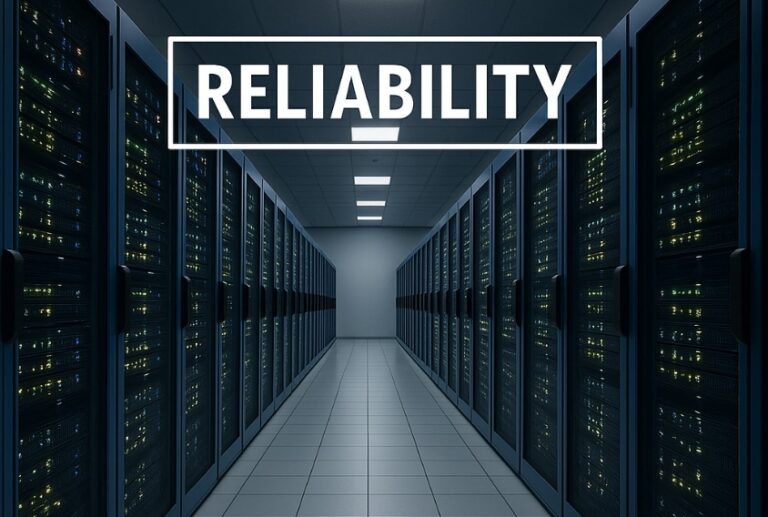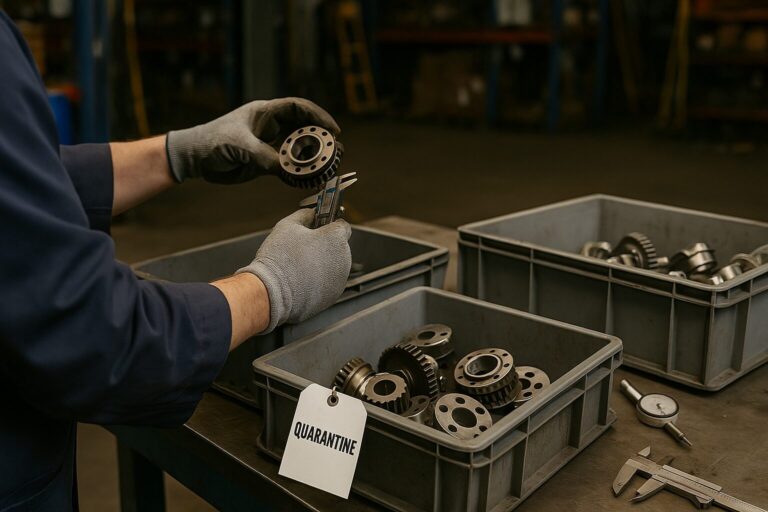Key Takeaways
- Work procedures are an important part of getting work done safely and effectively, capturing employee wisdom, and training new staff.
- Procedures are only helpful if people with firsthand knowledge of the field conditions are involved, and only when they are followed by the work team.
- Procedure preparation must be a collaborative effort between field personnel, operations, and the project team.
- Using external consultants as procedure stewards keeps company time commitment at a minimum, while ensuring procedure steps are informed by both company and industry wide knowledge.
Not many people get excited about writing work procedures. You may even get significant pushback from your team about whether or not they have a purpose. This is the “We know what we’re doing, why spend hours doing something we don’t need” sentiment. However, if stewarded effectively, procedures can be more than a set of steps for working, they can be your secret weapon for making new staff productive quickly, retaining the wisdom of retiring employees, and keeping good employees engaged. A good procedure can also protect you from the kind of non-boring workday you don’t want – the kind of day that includes an unplanned release, damaged equipment, or a workplace injury. So how do you make sure that the procedures at your company are the most effective possible?
Yes, work procedures can be tedious. It’s tempting to skip them, especially if you’re in a rush or if you have many years of experience in a facility. But they exist for good reasons: to protect people, property, and the environment. And taking a pass can lead to big trouble. Here’s just one example of how.
We recently supported a refined products transportation company with the installation of an updated pig launcher. To do the job, we had to isolate a section of the pipe prior to the replacement. The pump header had several check valves, which had the potential to trap a small amount of product upstream of the work area. Our procedure called for verifying between these check valves at vents on top of the piping to ensure complete drain up. If any product did remain behind the valves, the team could use a vac truck to complete the product removal.
But the crew skipped this step, proceeding with unbolting and removing the existing pipe, unknowingly leaving product between the work area and the first isolation valve. Everything went smoothly for the first 30 minutes of the process, but then the sun came out, warming up the pipe, and that little bit of product expanded just enough to start burping through the check into the work area. Since pipe removal had already started, there was no way to close off and contain the remaining product, resulting in some stressful moments before we determined the source.
Fortunately, the consequences of this procedure deviation were minor. There was some product spillage, and one member of the crew had to find a change of work clothes, but no one was seriously injured. But it could have been a lot worse. Had the sun remained hidden until later in the morning, we might have been welding when the product gush occurred.
During the lessons-learned discussion, we realized that although the procedure was written to avoid the incident, the operator’s foreman was working from memory rather than using the procedure as a guide. Diligence in following the work procedure could have prevented what might have been a very bad day. Where was the procedure when they skipped the verification step? On the floorboards of his truck.

What gets in the way of good written procedures?
Procedures—when well-written and properly adhered to—reduce the chances that things go wrong ensuring that everyone goes home safe. But not all companies are procedure oriented. And even among operators that have put effort into developing good procedures, gaps in the development and implementation process can still lead to incidents. Here are some of the key issues we’ve seen:
The wrong author
Ideally, individuals or teams with critical process knowledge need to be consulted and closely involved in preparing procedures. But this doesn’t always happen. It is often the case that the people with the most knowledge of the system and how it works would rather be out in the field using a wrench than in the office typing procedures on a computer. At the same time, those with computer and administrative skills may lack the “real-world” expertise necessary to successfully do the work out on the field.
Too many assumptions
Regardless of who is writing procedures, everyone has assumptions about what they themselves or other people already know, or don’t know. On one hand, we’ve seen over-detailed, over-complicated procedures which can be cumbersome, especially if they are not well organized. On the other hand, if the writer assumes that those implementing the procedures have knowledge that, in fact, they don’t, steps may be skipped and you can imagine how this can undermine an otherwise well-written procedure.
Heavy reliance on generic procedures
Generic procedures, available for repeated tasks, may seem like a good idea because they save time and effort, and sometimes they are. However, each pipeline or station has its own unique aspects, and one-size-fits-all procedures may miss some of the nuances of a particular facility. Taking a procedure written for a task in one facility may or may not protect against the hazards or unique configurations of another facility – even for the exact same task.
Toxic procedure culture
Even if procedures are well prepared, they don’t work if they’re not followed. When there is a disconnect between your procedure writing and your field work, or when there’s no buy in from your implementation teams, your procedures will be ineffective at best, and disastrous at worst. The “I know what I’m doing” attitude, or the “I just work here and do what I’m told” attitude can both result in poor decisions with tremendous consequences.
The keys to making procedures work in your operations
Even though good procedures can be challenging to come by, they are well worth the effort when you consider the consequences of failure: spilled product, injuries (or worse), damaged facilities, and the potential for legal and regulatory fallout. The roadmap to effective procedures will vary from organization to organization, however, here are some general principles we have found lead to great results:
Make procedure writing a collaborative effort
The “author” of the procedure should not be seen as an expert dictating how the work should occur. Rather, they should be a facilitator, bringing together multiple sources of knowledge. This means preparing a first draft, reviewing it in partnership with field staff, and encouraging the people implementing the procedure to have their say — “That won’t work because…, but here’s how we would do it.”
Anyone facilitating procedure-writing must know what areas of expertise are held by each of their stakeholders, and pull in wisdom from everyone including safety, scheduling, operations, electro-mechanics, pipeliners, welders, etc. Conference room settings or virtual meetings are often necessary, for reviewing procedure drafts, but on-site walk throughs with field personnel are an invaluable part of the drafting process. Get your team on location early in the process. And don’t skip the chit-chat at the end of the site visit. Take the time to hang around after and “shoot the breeze.” You’ll likely hear, “I was just thinking…” or “This might seem like a crazy idea…” and “Remember when….” stories once the meeting is done. It’s these informal settings when some of the best collaboration and learnings happen.
Use work procedures as a training tool
The procedure writing and procedure implementation can be a wonderful learning opportunity for both new and experienced employees. Stewarded effectively, the cross pollination between work groups during the procedure drafting process exposes everyone to years of knowledge and stories from past successes and failures, equipping your entire team to be better at what they do. Leveraging the writing and revising experience to incorporate lessons learned from “the real world” is a key way of transferring knowledge from those who are experienced – and close to retirement – to new personnel.
Involving all stakeholders is also a great opportunity to instill a safety culture in the company. It creates space for everyone to get on the same page with safety expectations as well as giving safety personnel a chance to see potential needs in the field. If you think of work procedures as a training tool, it can result in fewer near-misses, incidents, and injuries while training the next generation to be leaders in your organization.
Test procedures with a dress rehearsal
Before implementing any new procedure, go through the final steps and hazards on site with the team who will be doing the work. As much as is practical, have the team enact the steps they will carry out during the project. This can correct assumptions and fill knowledge gaps that could cause issues or delays during work.
Even at this stage, you may find adjustments are needed to safely execute the work. Keep encouraging the “what ifs” and “what abouts” from everyone.
Assign a procedure check-off person
Every project needs someone dedicated to ensuring that procedures are followed as the work is occurring. This shouldn’t be the foreman, as they have a lot going on directing work and people. The procedure check-off person shouldn’t have any other responsibilities assigned, not even getting lunch for the team!
Instead, consider having a newer person as procedure checker; they are less likely to make assumptions about work steps and let stuff go, and the experience can become and invaluable training vehicle for them (see #2 above).
Use external support to your advantage
Using a consultant who has worked with multiple operators on work procedures gives your company access to the best practices and lessons learned across the entire industry, not just your organization. Additionally, it can be difficult to find time to steward the procedure drafting process, but it’s much easier to critique and edit something prepared for you in advance. Using a consultant can take the time burden off field personnel and help the process seem less overwhelming.
Finally, if and when complex calculations are needed—such as drain up volumes for buried pipe in hilly terrain or specific flow conditions and pressure differentials to ensure a successful tool run, an external advisor can provide this support.
As an example, Acuren’s Integrity and Design team recently worked on complex pipeline purge involving multiple long segments with elevation changes. A detailed purge plan was needed to avoid complications such as air lock, pigs moving faster or slower than tool specification, and stuck pigs requiring cut outs. We helped develop the procedures for this 500-mile purge, resulting in the safe and successful recapture of valuable feedstock, and the ability to re-purpose infrastructure for a new venture.
Get the job done safely and efficiently with procedures that add real value
When done right, procedures can go a long way in improving the quality of the work your team does and the productivity of every member of your team. Even the process itself—while it does require effort—can have long-lasting benefits for your business. If you’re ready to rethink the role of procedures in your work and culture, we can help. Reach out to learn more about ways we’ve assisted other companies with their procedures and how we can work with your team to ensure your procedures are workable and effective, ensuring the safety of personnel, the environment, and your facilities.




